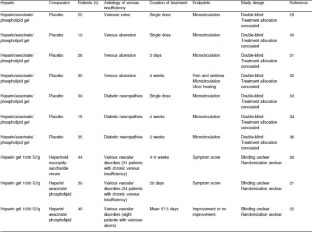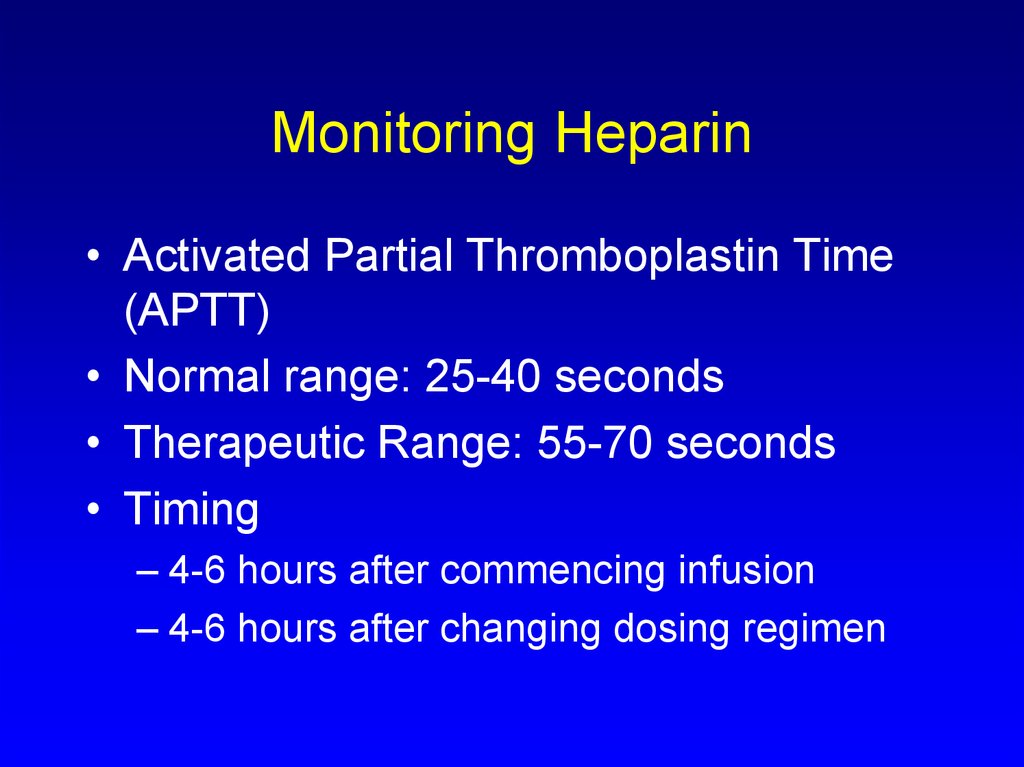

This basic sulfate binds to heparin to form an inert complex. Protamine sulfate, a peptide obtained from salmon sperm, can be used as an antidote to block the anticoagulant effect after open-heart surgery, after dialysis, in heparinized patients before acute surgery and in case of excessive or life-threatening bleeding.

Since the effect of heparin depends on the presence of AT III, it is advisable to monitor its level during prolonged treatment. Extension of the APTT (depending on the type of reagent used) is recommended 2-4 times.

Today, APTT is used for monitoring heparin treatment. disseminated intravascular coagulation - (DIC).venous thromboembolism - in therapy to prevent the growth of an already formed thrombus,.The main use is in the following indications: Heparin is used for anticoagulant and antithrombotic purposes. Heparin does not cross the placenta or into breast milk, so it can be used during pregnancy. Immediately after administration, heparin binds to vascular endothelial receptors.
Antidote of heparin full#
Intramuscular administration is not recommended due to the risk of haematomas at the injection site.įor full anticoagulation, a dose of 0.01 ml/kg of patient weight is administered twice daily to either low molecular weight heparin (eg. Heparin is effective only after intravenous (immediate effect) or subcutaneous (effect after about 2 hours ) administration. Method of administration and pharmacokinetics Its anticoagulant effect can also be used in vitro. It further reduces platelet adhesion to the endothelium, reduces platelet-derived growth factor releasing, and has a mild antihistaminic effect. Heparin releases lipoprotein lipase from the endothelium, which conditions its antilipidemic effect. It is a natural inhibitor of thrombin ( F IIa) and other serum proteases ( F IXa, Xa, XIa), with which it forms an irreversible complex. Antithrombin III (AT III) is α 2 -globulin synthesized in the liver. Heparin acts as a catalytic cofactor for antithrombin. Heparin is prepared by extraction from the intestinal mucosa of pigs and the lungs of cattle. unfractionated heparin and its derivatives - low molecular weight heparins and pentasaccharides are used therapeutically. It is normally present in the body (produced by mast cells, it occurs mainly in the liver, lungs and intestine). Heparin is a heterogeneous mixture of sulfonated polysaccharides (glycosaminoglycan) with anticoagulant effects, which is contained mainly in granules of basophilic granulocytes and mast cells.


 0 kommentar(er)
0 kommentar(er)
